Plymouth is the gateway to Cornwall, in the very south-west of Great Britain and England. But the old harbour city of Plymouth itself is also quite interesting and worth seeing, as we discovered…..
Page Contents (click line to jump the text)
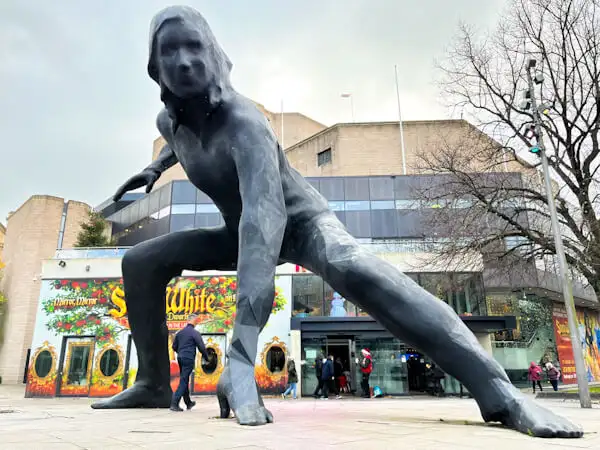
Intro
It was around the middle of December. We wanted to drive from Germany to Ireland in our recently purchased motorhome and take a detour via Cornwall.
I’ve made the attempt several times before, but I was always travelling to or from Ireland and never had enough time to really venture into the south-west of the British main island.
Sounds like an expedition? Somehow it does, because you have to drive a long way round to get there. From almost everywhere.
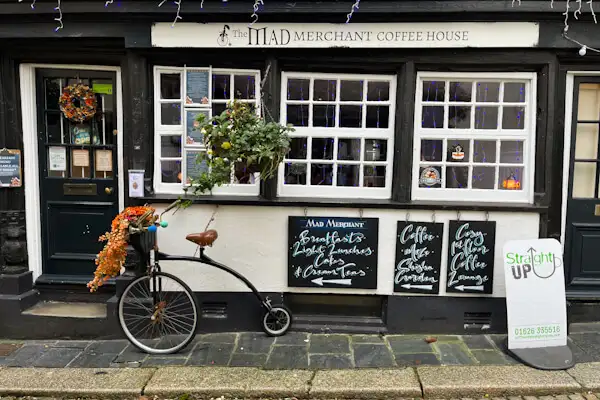
But this time we had planned several days – nothing could go wrong, could it?
But then storm ‘Darragh’ moved over Ireland and the British Isles and was expected to bring gusts of up to 120kmh. That’s about 75mph in England. If you’re doing 120kmh on the motorway and then get 120kmh winds from the front, it feels like you’re doing 240kmh (150mph)! With the motorhome…?
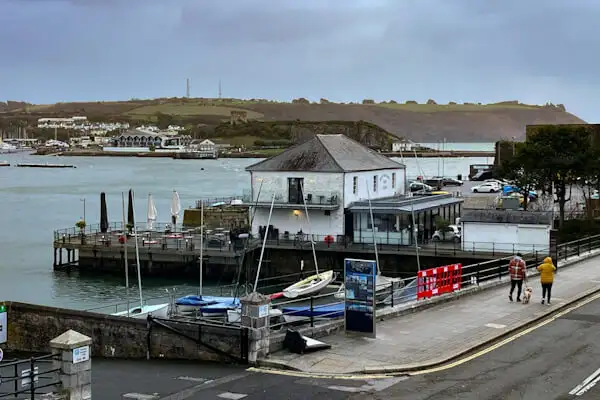
But at a speed of 80kmh with gusts of 70kmh, our large motorhome was already swaying and shaking so badly that we decided to break off the journey and look for a campsite in Plymouth at very short notice. There was even a site on the outskirts of the city, which was quite sheltered. We were granted asylum and found our pitch in the last light of the winter’s day.
As promised, Darragh really let off steam that night and the next day – the storm howled and raged and we were glad we weren’t travelling with the motorhome.
What to do? ‘Well, we could have a look at Plymouth and do a bit of shopping or something’ – we had already driven through the city the previous evening and were less than impressed: a modern city with lots of traffic, not really our thing!
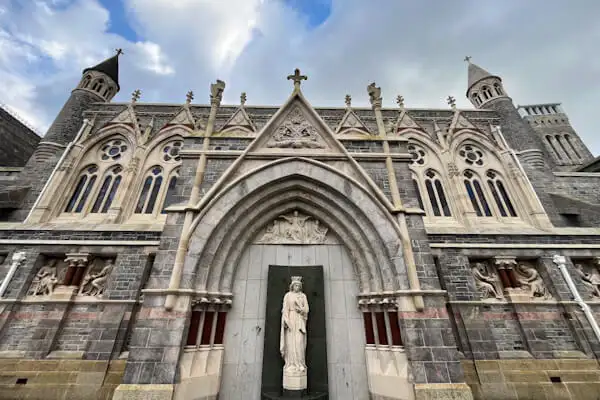
Several hours later, we were very exhausted and very happy with our decision: The city had surprised us in a very positive way after all!
What we did and saw in Plymouth
At Drake Circus in the centre of Plymouth, it’s ‘shop until you drop’. This shopping district is home to shops of all brands and sizes and, of course, coffee shops and restaurants of all kinds.
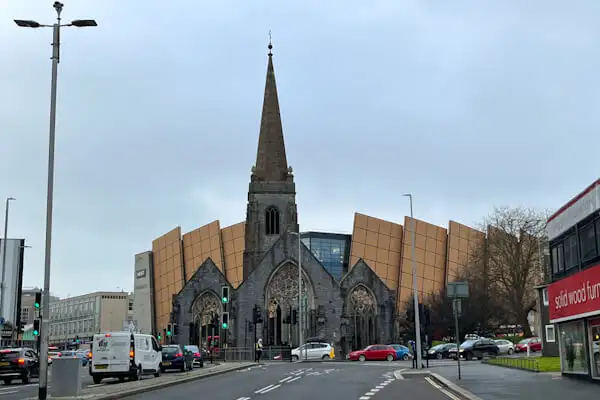
A little further south is the Royal Parade, a large avenue with the Theatre Royal, in front of which stands a gigantic statue/sculpture. A little further on I found some very beautiful historic buildings, St Andrews Church and the Guildhall.
The church has a very beautiful courtyard with marvellous ancient buildings behind it and the Guildhall is very magnificently designed, with wonderful sculptural work on its façade.
A little further on I came to the old harbour of Plymouth. This is the Barbican, Plymouth’s historic harbour district and probably one of the city’s most important sights.

As well as fishing boats and pleasure craft of all kinds (I love boats!), there are the old warehouse buildings, old restaurants, pubs and shops and very pretty narrow, winding streets. The Barbican is practically the old town of Plymouth – and what a beautiful one it is! I wandered around here for a long time and enthusiastically explored all the banks and the little winding alleyways with my camera.
Unfortunately, there is little left of Plymouth Castle above the pier. The Royal Citadel towers high above it on a hill. Once an artillery bastion that protected the harbour, it is still home to a royal artillery unit. There are also guided tours of the historic site.
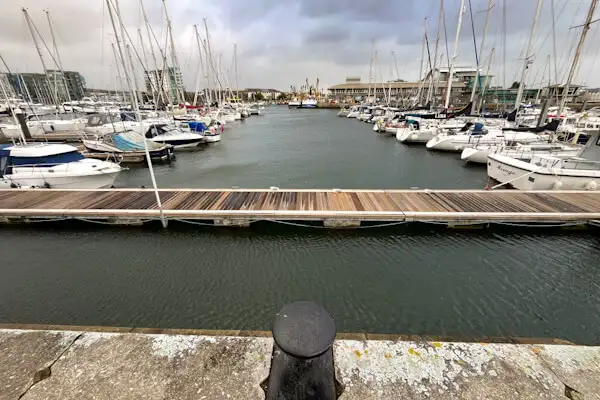
A pedestrian swing bridge leads from the Barbican neighbourhood to the National Marine Aquarium on the opposite bank. I used to go diving – of course I visited the aquarium and found it really beautiful. As well as lots of educational illustrations suitable for children, there are really nice big tanks with wonderful marine life from the British coasts, as well as more exotic fish, molluscs and crustaceans.
Meanwhile, the storm continued to rage over Plymouth and after a few coffee, restaurant and shopping stops, our image of Plymouth had changed considerably: The city has something! The city’s coastline, the old harbour and The Barbican are particularly beautiful!

Short history of Plymouth
Plymouth is and always has been primarily a harbour city. Its history dates back to Roman times, when this region in the south-west of England played an important role in trade and defence. In the Middle Ages, Plymouth was an important fishing harbour.
In the 16th century, the city developed into an important base for English maritime trade and the navy, particularly due to the activities of Sir Francis Drake, who fought the Spanish Armada from Plymouth in 1588 as a ‘pirate on behalf of the Crown’.

In 1620, the sailing ship Mayflower set sail from Plymouth with a group of Pilgrim Fathers for the ‘promised land’ – America.
During the English Civil War in the 17th century, Plymouth was a strategically important point. The city remained under the control of the Parliamentary forces, despite sieges by the Royalists.
In the 18th and 19th centuries, Plymouth benefited from the growth of the shipyards and the expansion of the harbour, which strengthened the city’s economic importance as a centre for shipbuilding and the navy.
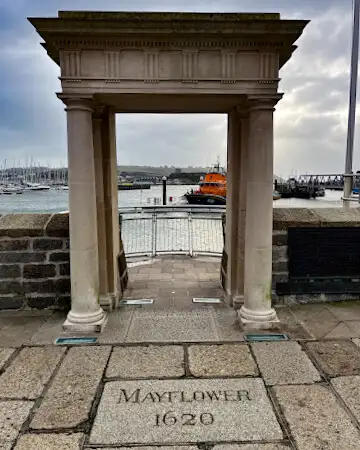
During World War II, Plymouth was badly damaged, particularly by air raids in 1941. After the war, reconstruction began and the city experienced a recovery in the following decades.
Today, Plymouth is best known for its maritime history, including the departure of the Pilgrim Fathers in 1620, and is home to several historic attractions such as the National Maritime Museum and Plymouth Hoe.
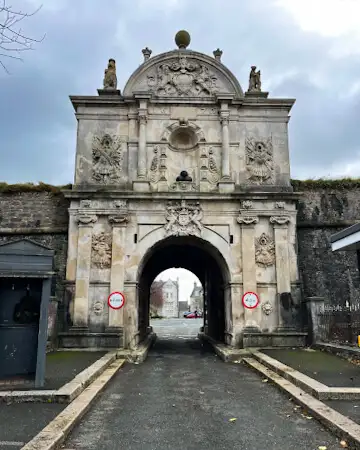
Sightseeing in Plymouth – points of interest
Plymouth Hoe
An extensive public park in the south of the city, close to the sea. Here you will also find the famous Smeaton’s Tower, a lighthouse built in 1759 and now a landmark of Plymouth.
Royal Citadel
A historic 17th century fortress located on Plymouth Hoe. It was originally built to protect against attacks from the sea and can be visited today. See: https://www.english-heritage.org.uk/visit/places/royal-citadel-plymouth.
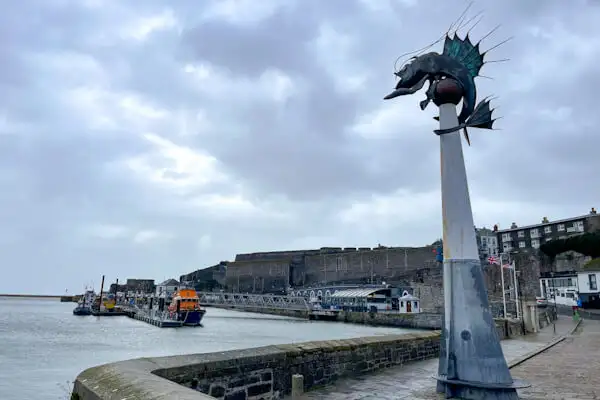
Mayflower
The Mayflower Steps are a historic monument at the harbour that commemorates the place from which the Pilgrim Fathers sailed to the New World on the Mayflower ship in 1620. It is an important point in American history. You can find out much more about it at the Mayflower Museum next door, see: https://www.mayflowermuseum.co.uk.
National Marine Aquarium
The largest aquarium in south-west England, housing an impressive collection of marine life from the region and around the world. The tunnel with sharks and rays is particularly worth seeing. See: https://www.national-aquarium.co.uk.

Royal William Yard
A historic site in the south-west of Plymouth, built in the 18th century and originally used as a shipbuilding and warehousing complex. Today it houses a mixture of restaurants, shops and flats and offers beautiful views of the harbour. See: https://royalwilliamyard.com.
Plymouth Barbican
A picturesque, historic neighbourhood in the south of Plymouth with many half-timbered houses and narrow streets. It offers many small shops, coffee shops, restaurants and art galleries. But above all, the old harbour district is probably the closest thing Plymouth has to an old town. The mayflower museum is also located here and the aquarium on the other side of the harbour.
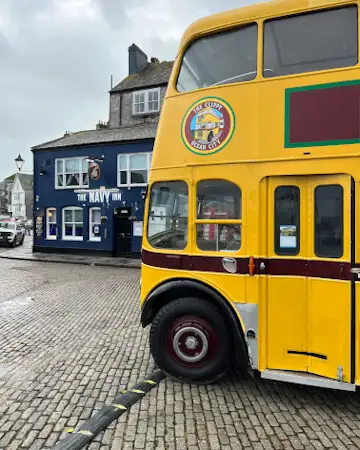
Devonport Naval Heritage Centre
A museum on the historic dockyard site. Here you can learn a lot about the British Navy. See: https://devonportnhc.wordpress.com.
St Andrew’s Church
A very beautiful neo-Gothic style church in the centre of Plymouth, known for its architecture and historic stained glass windows. See: https://www.standrewschurch.org.uk.
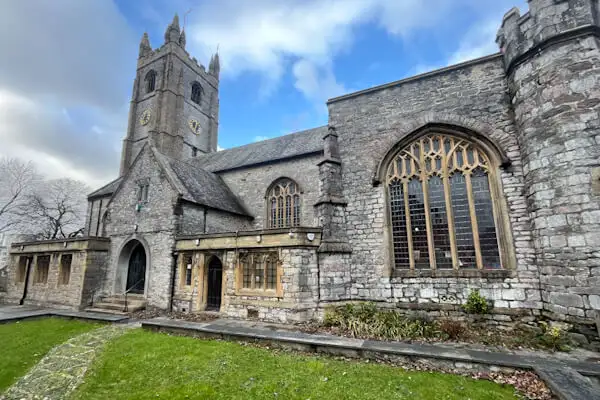
Plymouth Gin Distillery
The oldest gin distillery in England is located in the Barbican neighbourhood. Here you can take a guided tour of the distillery and learn more about the production of gin. See: https://www.plymouthdistillery.com.
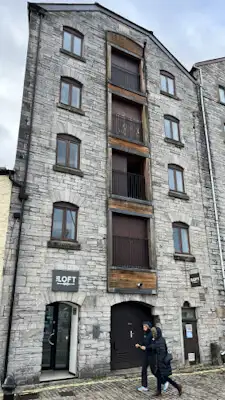
Practical travel tips for Plymouth
Plymouth is a modern, large city with a lot of traffic. With a motorhome, you will hardly find a parking space in the city centre, but there are many car parks for cars. However, it is also a good option to find accommodation a little outside the city and take one of the many double-decker buses to the centre.
Plymouth is at its best by the sea, around the harbours, sea bastions and associated parks. I particularly recommend the old harbour district of The Barbican, which is really beautiful.
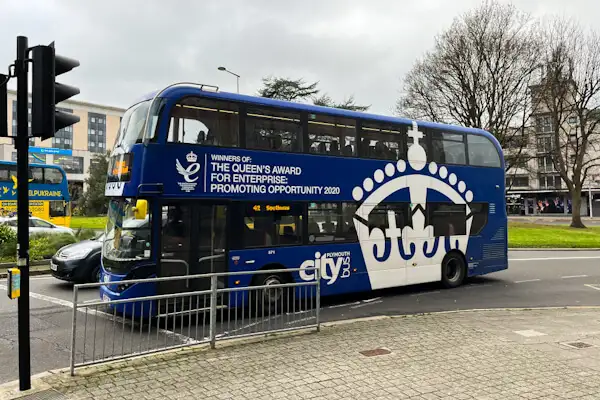
Conclusion
Plymouth is a modern harbour city with a long and interesting history. Much of this can be found in and around the old and beautiful harbour.
Shopping, eating and drinking? No problem, because there are plenty of opportunities in Plymouth. And the surrounding area also has some great activities to offer.
If, like us, you’re on your way to Cornwall, you can easily spend a double night here in Plymouth and take a day off, as we did. But even just a short stopover at the old harbour is highly recommended.
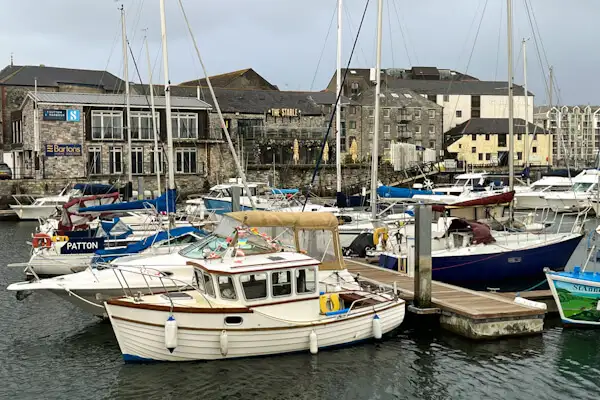
More interesting articles for you
TRURO – HEART OF CORNWALL
TOURING CORNWALL
Aberystwyth: Lively west coast (of Wales)
Beaumaris: French charm on the island of Anglesey in Wales
Cover picture: In the old harbour of Plymouth (Photo: Ulrich Knüppel-Gertberg)